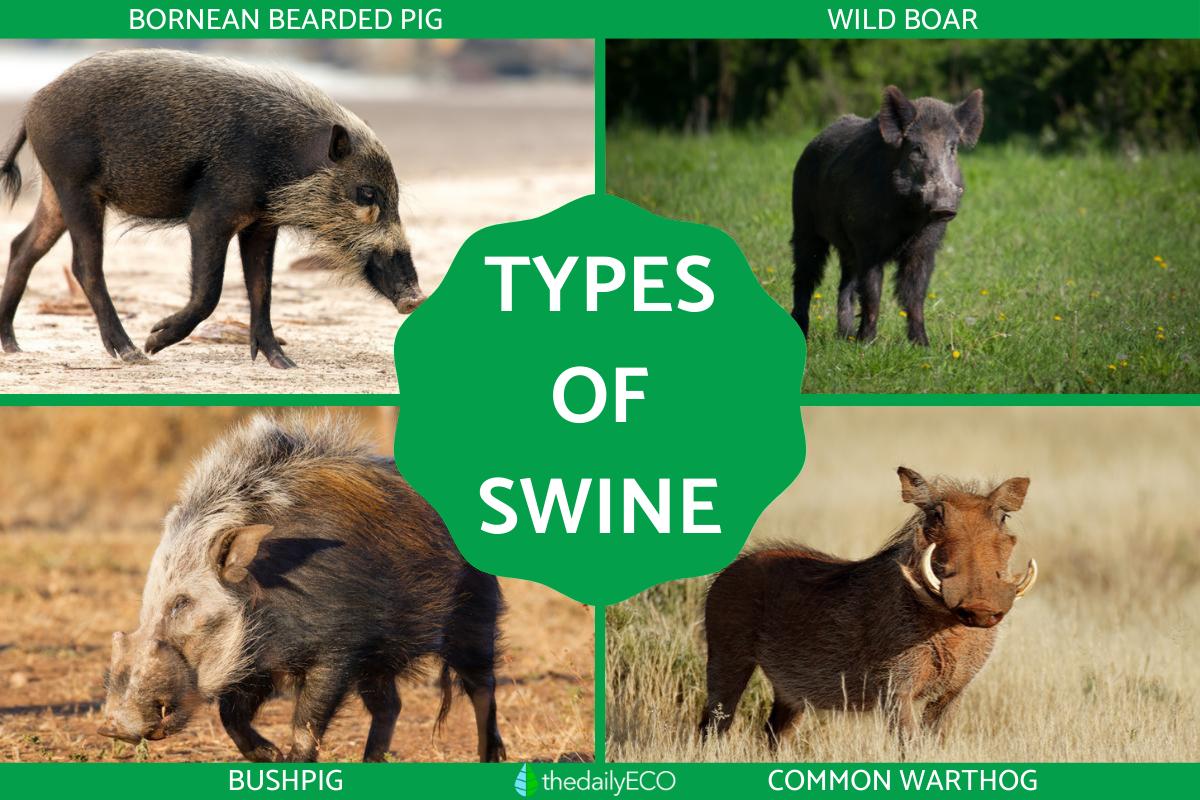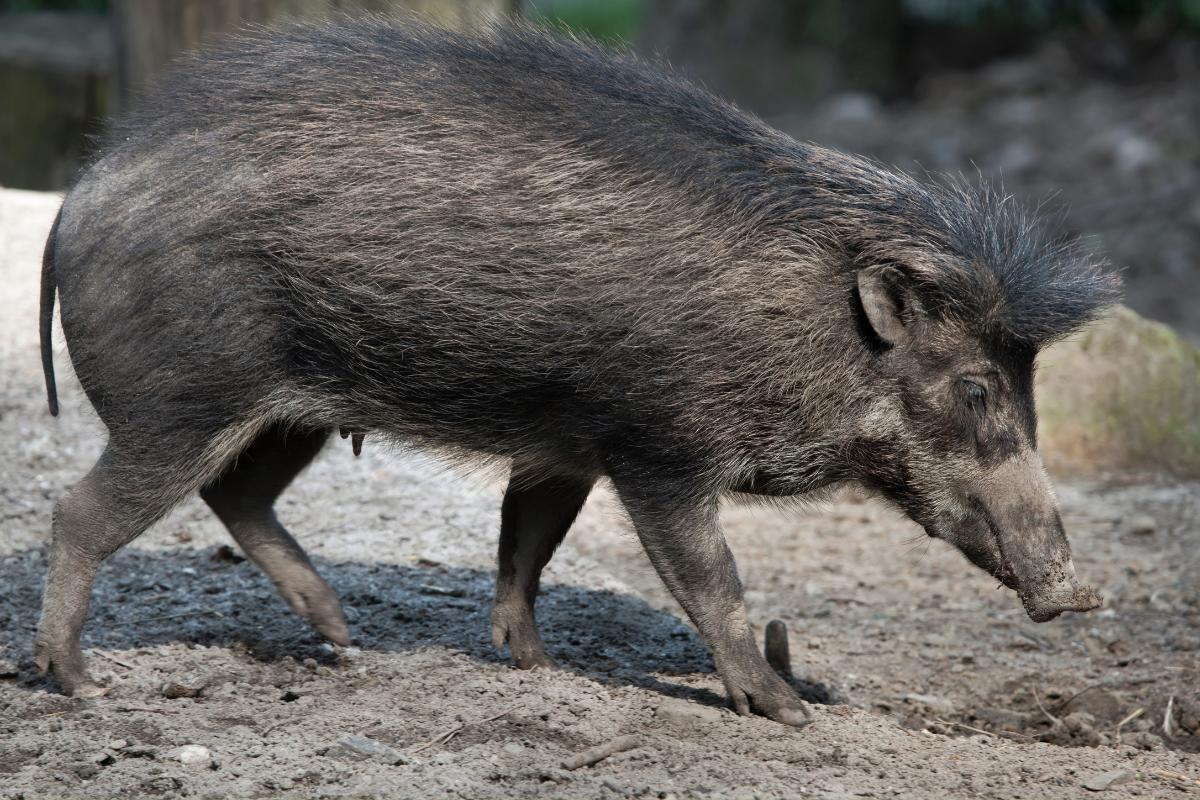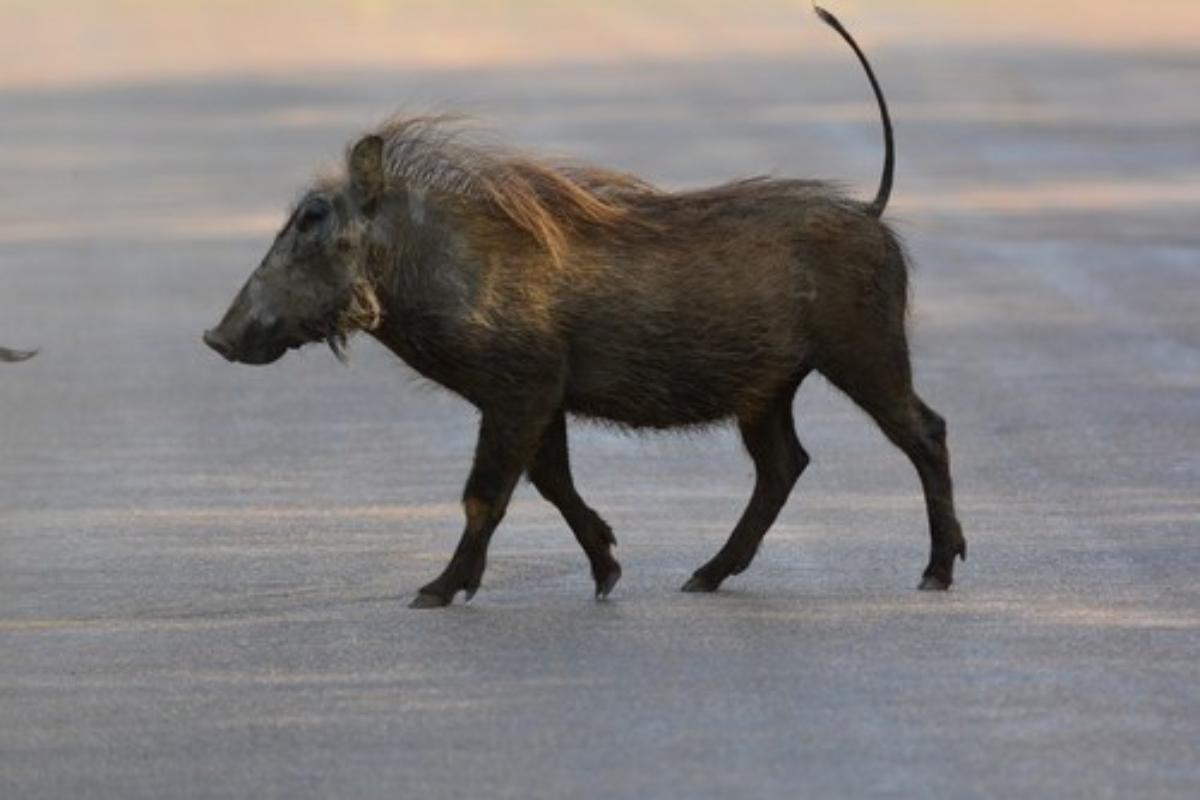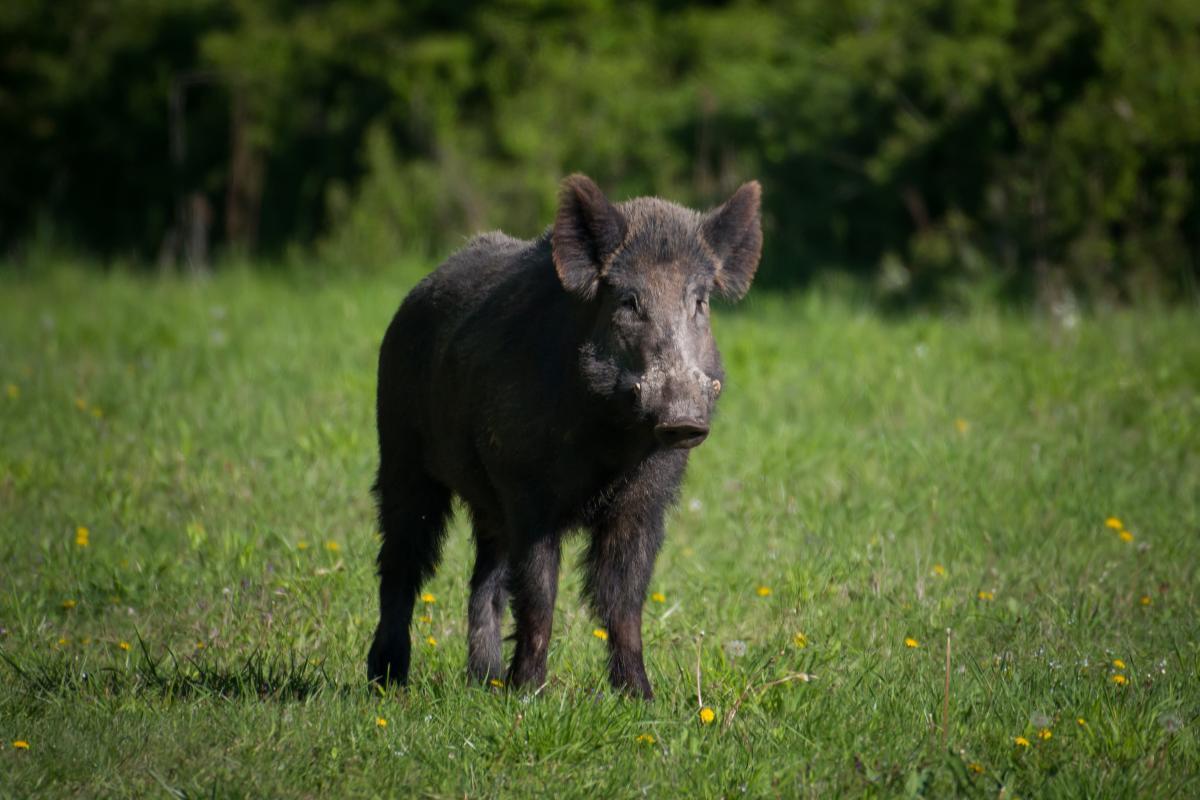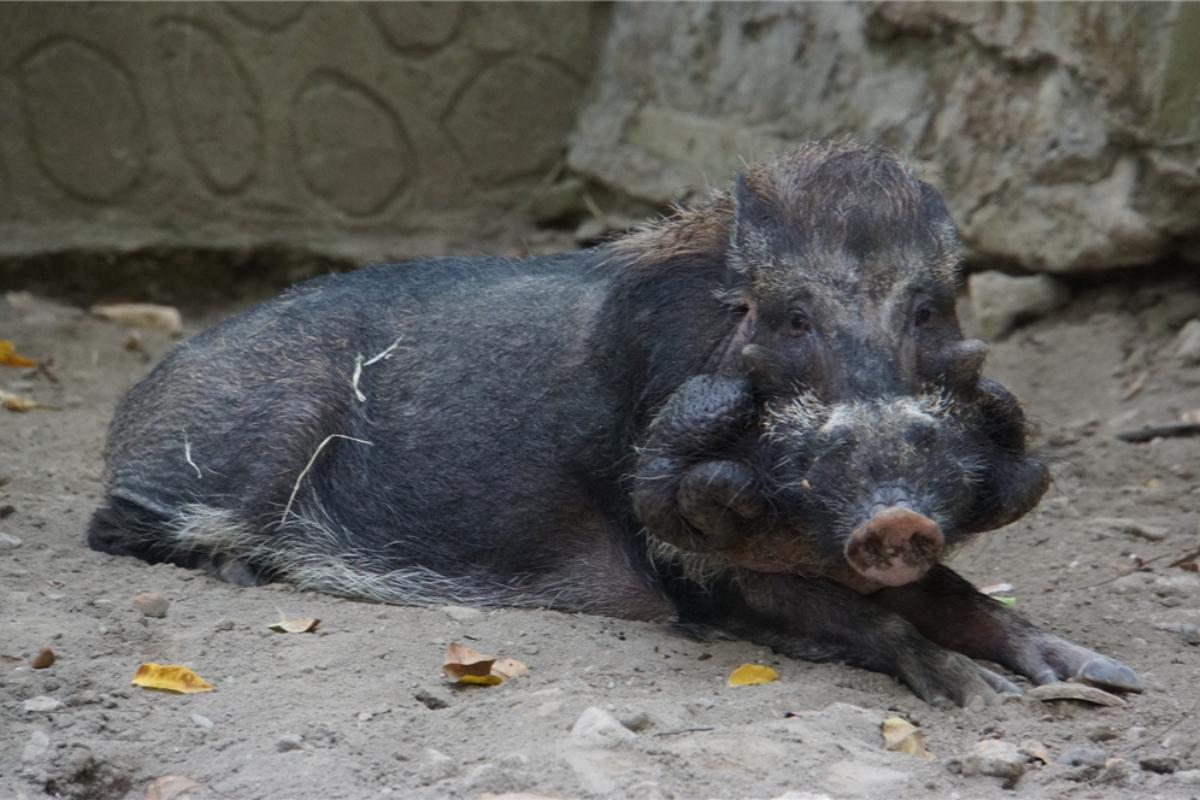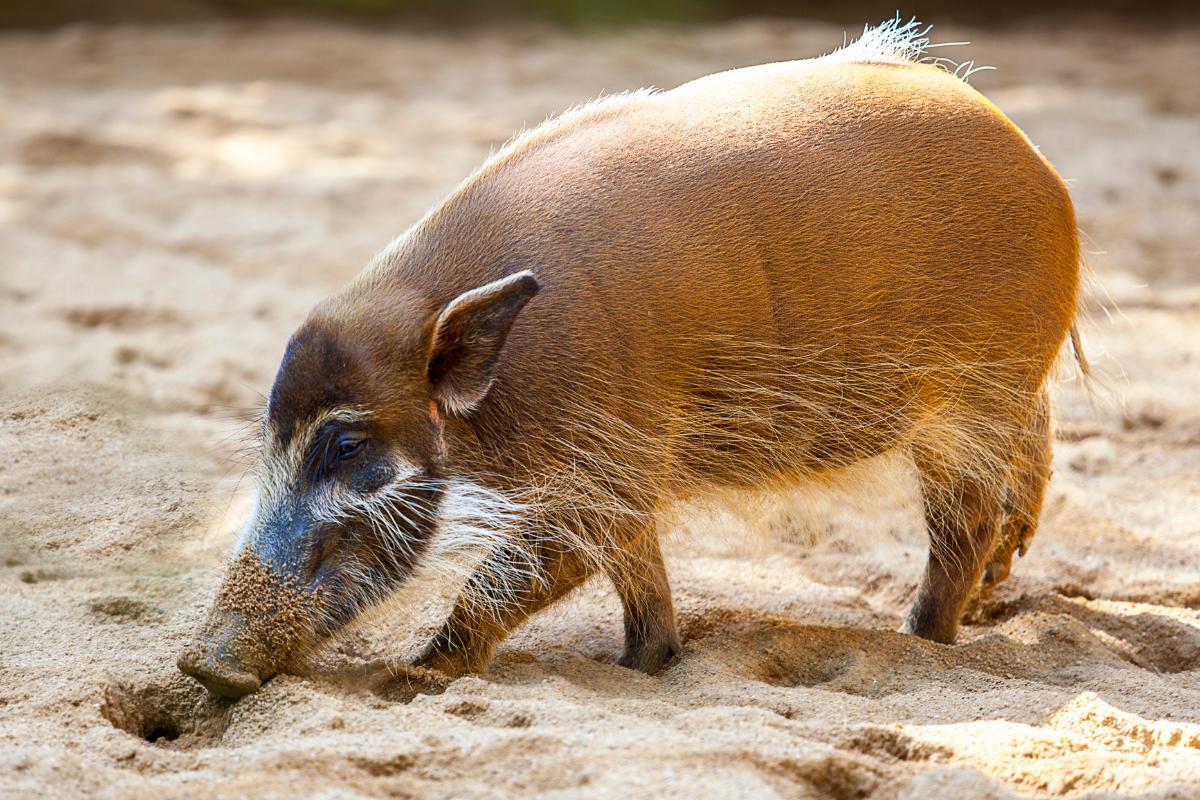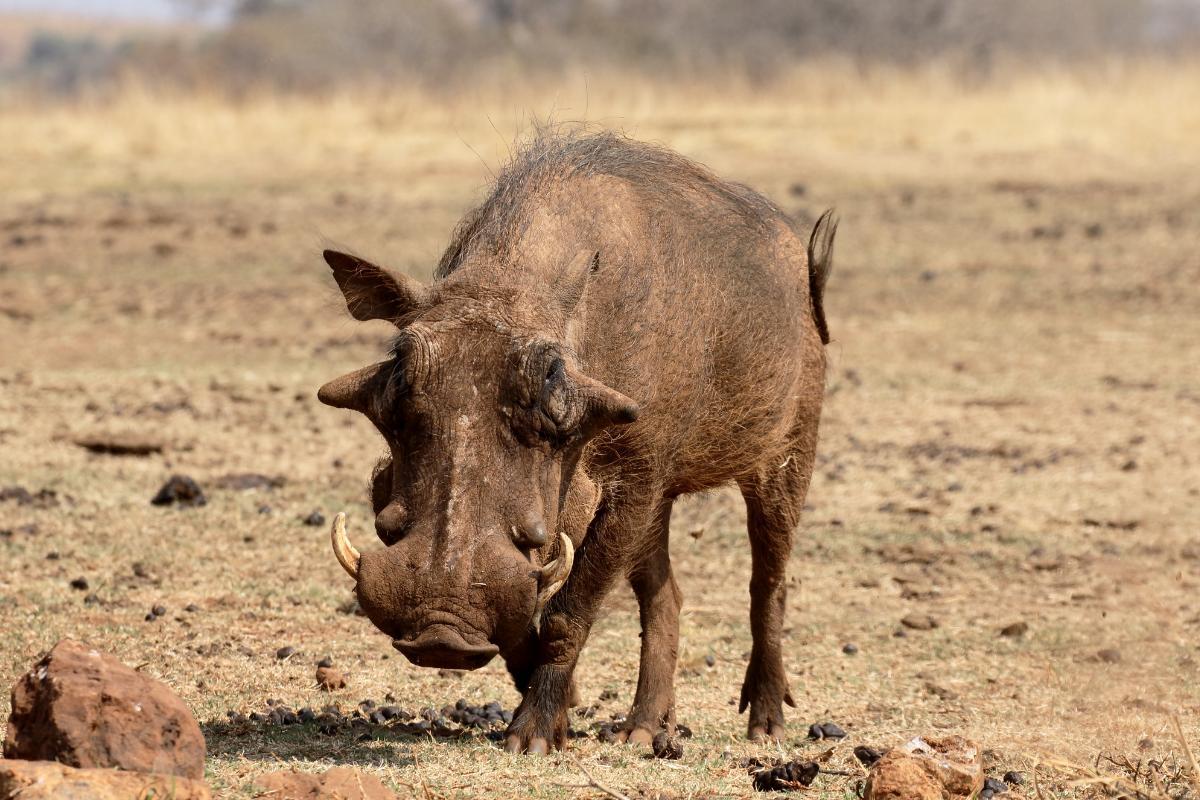Different Types of Swine Species


You may be familiar with swine, farm animals that are raised domestically all across the world. Perhaps most commonly known as pigs, these animals have been domesticated for millennia. Various domestic breeds have been established during this time. There are also many wild pigs which can look quite different from their domesticated cousins. Despite their diversity, they are all from the family Suidae. Animals in this family are ungulate mammals that are considered artiodactyls because they bear weight on an even number of toes on their hooves. thedailyECO explains more about pigs and hogs by sharing the different types of swine species.
- What are swine?
- Characteristics of swine
- Palawan bearded pig (Sus ahoenobarbus)
- Bornean bearded pig (Sus barbatus)
- Visayan warty pig (Sus cebifrons)
- Celebes warty pig (Sus celebensis)
- Oliver's warty pig (Sus oliveri)
- Philippine warty pig (Sus philippensis)
- Wild boar (Sus scrofa)
- Javan warty pig (Sus verrucosus)
- Pygmy hog (Porcula salvania)
- Giant forest hog (Hylochoerus meinertzhageni)
- Bushpig (Potamochoerus larvatus)
- Red river hog (Potamochoerus porcus)
- Common warthog (Phacochoerus africanus)
- Desert warthog (Phacochoerus aethiopicus)
- Buru babirusa (Babyrousa babyrussa)
- Bola Batu babirusa (Babyrousa bolabatuensis)
- North Sulawesi babirusa (Babyrousa celebensis)
- Togian babirusa (Babyrousa togeanensis)
What are swine?
Also known as pigs or hogs, swine are the animals which encompass the taxonomic family known as Suidae. They are ungulate animals that are part of the Artiodactyla order which bear their weight on an even number of their toes. These toes can number up to five, but some are absent or merely vestigial. It includes both wild hogs and domestic pigs.
Swine are non-ruminant ungulates, meaning they are animals with hooves. While ungulates are mainly known as being types of herbivorous animals, swine generally have an omnivorous diet. This is reflected in their dentition which features molars with low crowns and small cusps. These are similar to those of bears and humans.
The Suidae family has 6 genera and individual 18 species of swine. They are native to Eurasia and Africa, although some have been introduced to America and Oceania. Males are usually larger than females and have more developed canines, known as guard teeth. These animals organize themselves into family groups and communicate through a variety of sounds.
Learn more about the characteristics and types of even-toed ungulates with our related guide.
Characteristics of swine
We have already shared some of the characteristics of pigs, swine and hogs by their general description. You can better understand these mammals by looking at their most important characteristics:
- Suidae are members of the order Artiodactyla and are characterized by having four toes on each foot, although they walk mainly by placing their weight on the two central toes.
- They have one simple stomach, unlike the multi-chambered ruminant stomachs of other artiodactyls.
- They have large heads, short necks, small eyes and prominent ears.
- They usually have bristly fur and a short tail that ends in a tassel.
- They have a well-developed sense of hearing and are vocal animals, communicating through grunts and squeals.
- Their sense of smell is keen, something which helps them search for food. In fact, some swine are key to source wild truffles for the culinary industries thanks to this incredible sense of smell.
Now you know what swine are, you can see some example species below. These include the various species of wild pigs you can find in nature.
Palawan bearded pig (Sus ahoenobarbus)
The Palawan bearded pig (Sus ahoenobarbus) is a species endemic to the Philippines, present on the islands of Balabac, Palawan and Calamianes. Its size varies between 3.3 and 5.2 ft (1 and 1.6 m) in length and can reach a weight of up to 330 lb (150 kg).
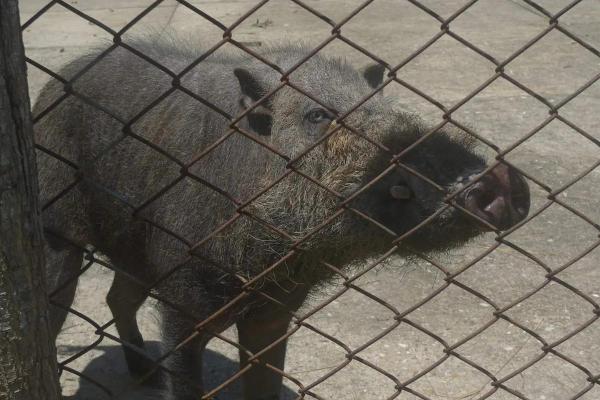
Bornean bearded pig (Sus barbatus)
Another hog from the Sus genus, the Bornean bearded pig (Sus barbatus) is characterized by its prominent beard and sometimes tail tassels. It lives in Southeast Asia, especially Sumatra, Borneo, the Malay Peninsula and the islands of the Sulu Archipelago. It is also known as the Sunda bearded pig.
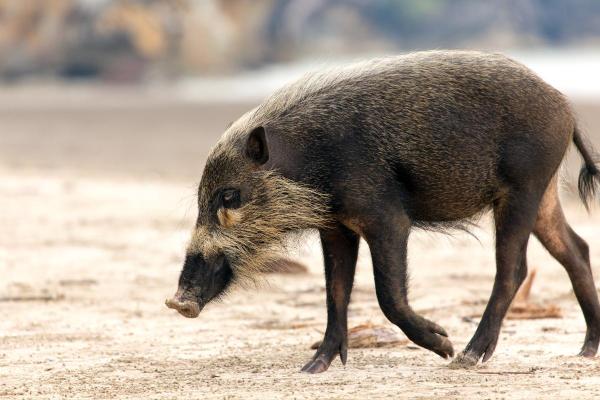
Visayan warty pig (Sus cebifrons)
The Visayan warty pig (Sus cebifrons) is a critically endangered swine species, endemic to six islands in the Philippines. Its population is mainly found on Negros and Panay, while it is believed to be extinct on the other islands it once populated in large numbers.
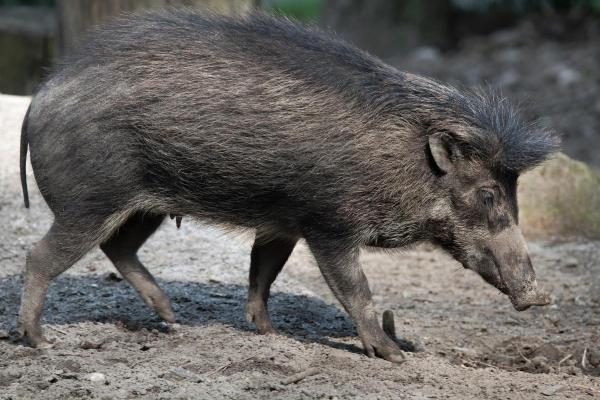
Celebes warty pig (Sus celebensis)
The Celebes warty pig (Sus celebensis) is a species found in Sulawesi, Indonesia. This is a type of medium-sized swine. They are is considered a type of warty pig because they are one of a number of swine which have fleshy growths on their face that resemble warts. This swine species exhibits variability in appearance, although it is currently considered a monotypic taxon.
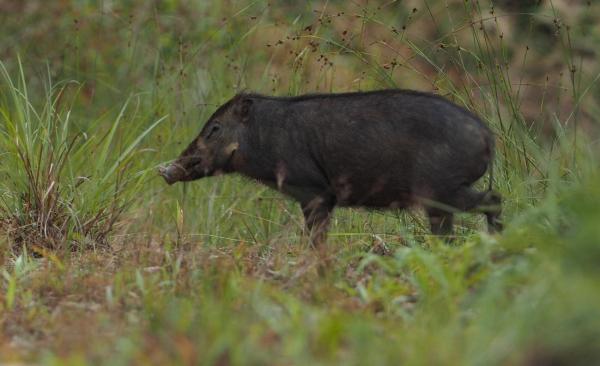
Oliver's warty pig (Sus oliveri)
Also known as the Mindoro warty pig, the Oliver's warty pig (Sus oliveri) is a small species endemic to the island of Mindoro in the Philippines. It is highly sought after by hunters, which has led to its extreme rarity in the wild.
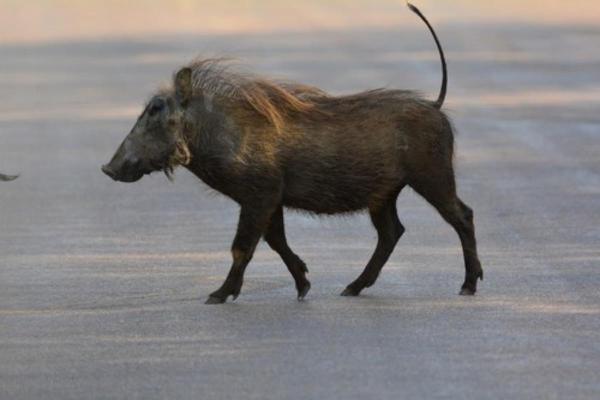
Philippine warty pig (Sus philippensis)
As its name suggests, the Philippine warty pig (Sus philippensis) is endemic to the Philippines. It is characterized by tufts of hair on its head and lower jaw. They are considered sexually dimorphic animals, with males having larger tusks and skulls than females.
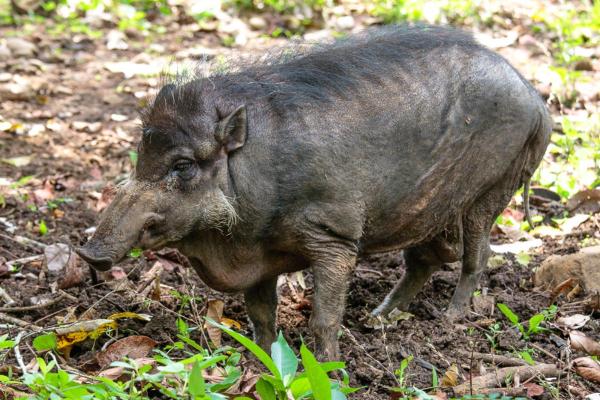
Wild boar (Sus scrofa)
One of the most well known of the different types of swine in Europe, the wild boar (Sus scrofa), is also known as the wild swine or common wild pig. It is native to much of Eurasia and North Africa, and has been introduced to the Americas and Oceania. This species is one of the most widely distributed mammals worldwide, being the most widespread Suiformes animal in the world.
Wild boars are known for being very territorial, making them one of the most dangerous animals in Spain and other European countries with few large predator species.
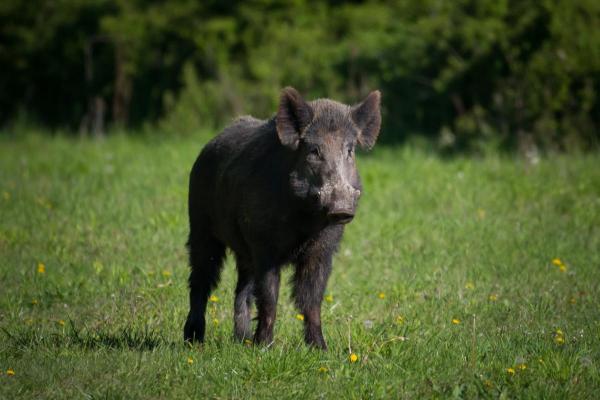
Javan warty pig (Sus verrucosus)
The Javan warty pig (Sus verrucosus) is an ungulate endemic to the Indonesian islands of Java and Bawean. Its habitat is limited to protected areas such as Leuweung Sancang Nature Reserve and Meru Betiri National Park.
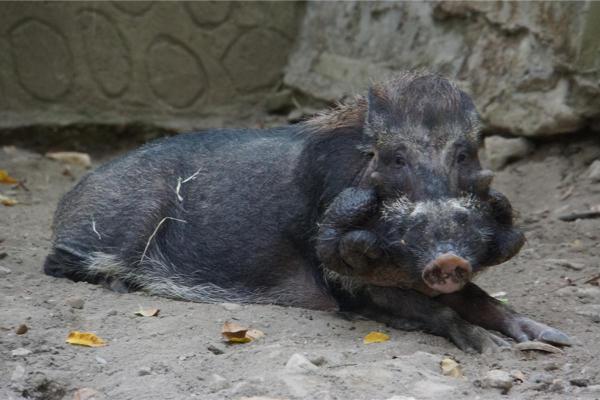
Pygmy hog (Porcula salvania)
Moving away from the Sus genus of swine, we find the pygmy hog (Porcula salvania). The only known member of its genus, this is a very small and endangered species. It is currently found only in Manas National Park of Assam in India.
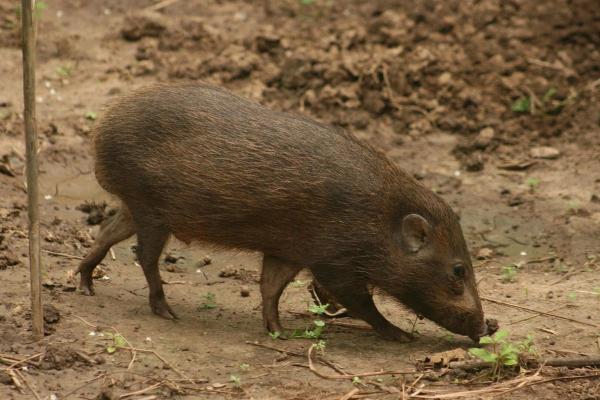
Giant forest hog (Hylochoerus meinertzhageni)
The giant forest hog (Hylochoerus meinertzhageni) is also the only member of its genus and inhabits forests in Africa. Unlike some of the other different types of swine species, the giant forest hog is not endangered. They are considered nocturnal swine, although they can come out during the day if they feel safe.
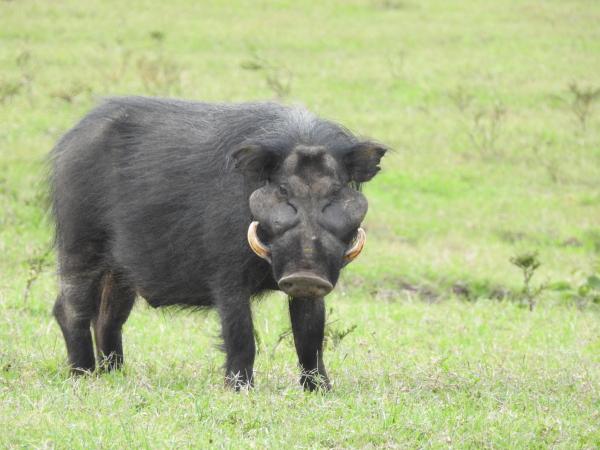
Bushpig (Potamochoerus larvatus)
The bushpig (Potamochoerus larvatus) is a wild boar found in forests and riverine areas of East and Southern Africa. Some populations have also been recorded in Madagascar. These swine are nocturnal and generally live in large social groups. They are considered very aggressive, so it is recommended you do not go close to them.
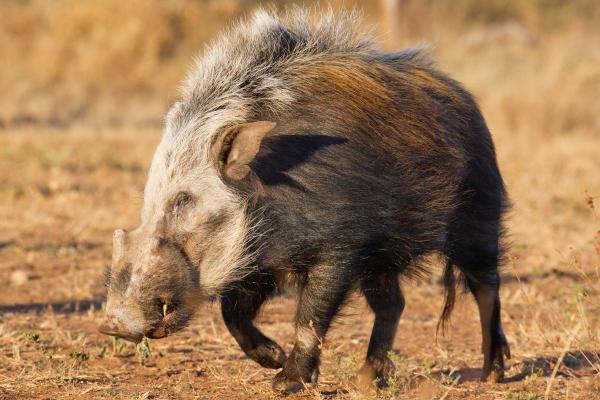
Red river hog (Potamochoerus porcus)
Confusingly, the red river hog (Potamochoerus porcus) is also sometimes known as a bushpig. It is a type of swine that lives in the forests of Guinea and Congo, preferring areas near rivers and swamps. Its coat ranges from orange to reddish brown and has characteristic white markings.
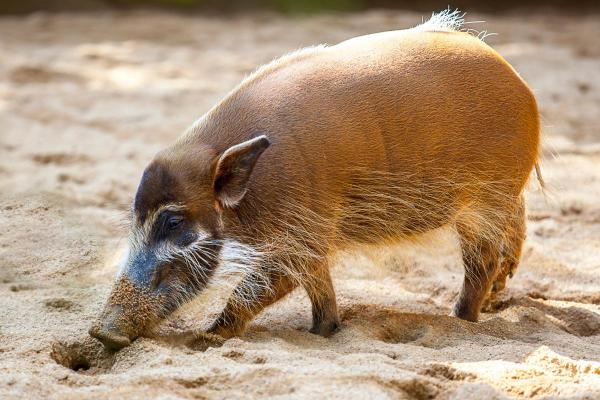
Common warthog (Phacochoerus africanus)
The common warthog (Phacochoerus africanus) is a swine that inhabits grasslands and savannas of sub-Saharan Africa. It has four known subspecies which are determined according to the location of their populations in different parts of Africa.
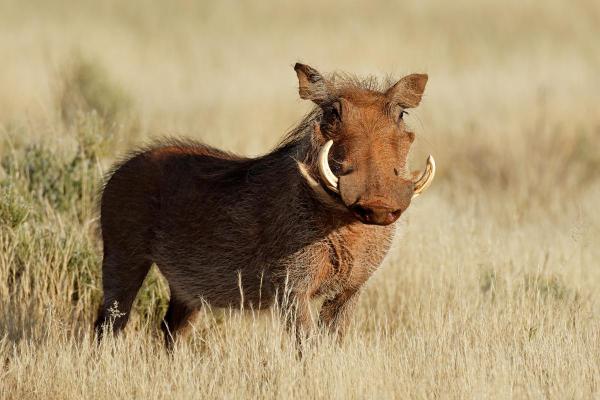
Desert warthog (Phacochoerus aethiopicus)
The desert warthog (Phacochoerus aethiopicus) is the only other member of the genus known commonly as warthogs. It is a hoofed mammal native to the Horn of Africa. There are two subspecies, the extinct Cape warthog and the Somali warthog. Pumba from the Lion King franchise is a famous warthog.
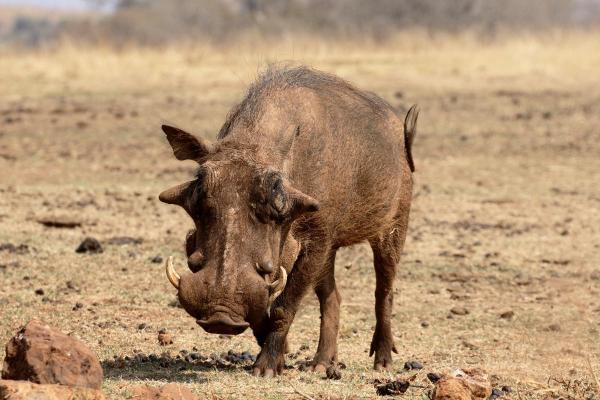
Buru babirusa (Babyrousa babyrussa)
The Buru babirusa (Babyrousa babyrussa) is a type of wild swine native to the Buru and Sula islands in Indonesia. Also known as the Moluccan babirusa, it inhabits tropical rainforests and riverbanks. It is known for its omnivorous diet.
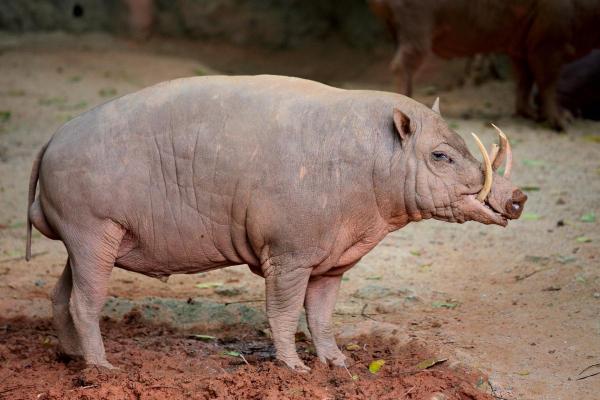
Bola Batu babirusa (Babyrousa bolabatuensis)
The Bola Batu babirusa (Babyrousa bolabatuensis) is a swine species endemic to Sulawesi in Indonesia. Described in 1950 as a subspecies, it was elevated to species status in 2002. Currently, only subfossil remains of this babirusa are known from South Sulawesi.
North Sulawesi babirusa (Babyrousa celebensis)
The North Sulawesi babirusa (Babyrousa celebensis) is also native to Sulawesi. It has large tusks that curve toward the forehead. This species is threatened by hunting and deforestation, meaning it is considered to be vulnerable according to the IUCN.
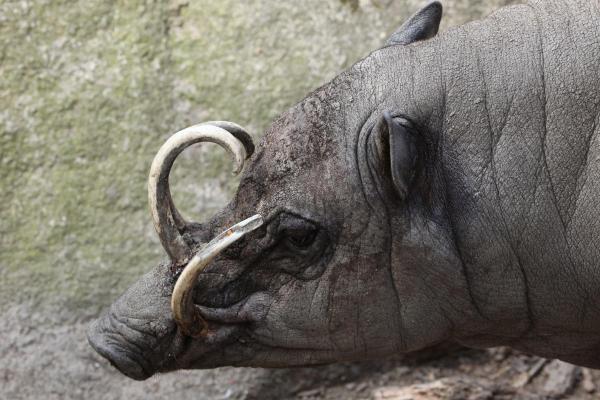
Togian babirusa (Babyrousa togeanensis)
Also known as the Malenge babirusa, the Togian babirusa (Babyrousa togeanensis) is the largest species of babirusa and is endemic to the Togian Islands in Indonesia. This omnivore feeds on roots, fruits, worms and invertebrates.
You can learn more about other ungulate animals than the different types of swine with out article asking what are ruminant animals?
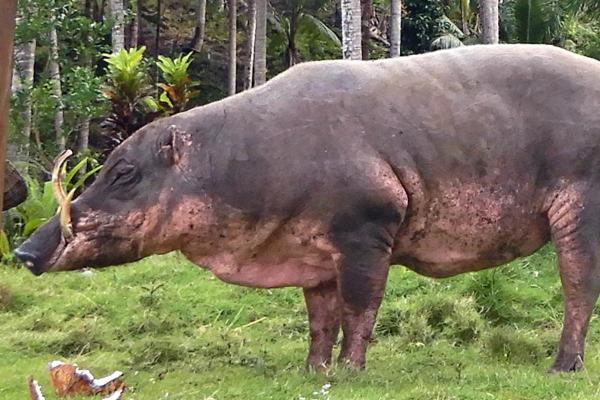
If you want to read similar articles to Different Types of Swine Species, we recommend you visit our Wild animals category.
- Mammalia BioScripts. Suidae (Suids).
https://mammalia.bioscripts.net/familia/suidae-suidos/ - Mosquera, M. (n.d.). Pigs in Prehistory.
https://thefarmrevolution.net/farm-of-ideas/pigs-in-prehistory/ - Hardjasasmita, H. S. (1987). Taxonomy and phylogeny of the Suidae (Mammalia) in Indonesia. Scripta geologica, 85, 1-68.





